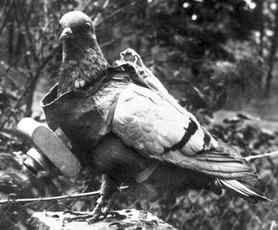When I think about horses in times of war, it is hard not to immediately think about the most famous horse of all: the Trojan Horse.
I must admit that I have always found it strange that the Trojans can't have been the sharpest knife in the drawer. They fell for a trick that even the most naive of us would have yelled most loudly " Don't do it! "
Still, perhaps times have not changed so much: we still appear to let the enemy in, don't we?
But, of course, the real war horses from history were not made of wood. They were heroes and served alongside their mates as earnestly as their human masters.
So today, I want to pay homage to the brave horses and the dogs who served us so well in times of war and perished in piteous circumstances. They were among the mightiest of the mighty and dear and trusted mates.
In the First World War and in the Boer War , horses were indeed beasts of burden and what a burden they carried. They carried supplies. They carried the brave soldiers heading to battle. They carried the fear and the horror and they bore it all with quiet resignation.

Ne’er again to see England, in lands far away,
Through death and destruction, through blood sweat and tears,
I carried my master, along with my peers,
So I ask you to remember a while,
Along with the soldiers, in smart rank and file,
Remember our beauty, the strength of our kind,
As we galloped through danger, without care to mind,
For we were the horses thrust into war,
And we gave up our lives for your peace evermore.
The young men who left for war over a century ago were full of hope and excitement.
They were proud young Australians and Patriots. They marched off to war and either perished in the mud of the battlefield or came home as different people.
Some time ago, I received an email from Malcolm, a valued contributor here on patriotrealm.com
It said, so simply:
When Dad was in France in 1917 he was a driver of horses, and moved an 8 pounder gun around.
After the war they were not allowed to bring their horses home to Australia and many of them had the awful task of shooting them rather than leave them to a cruel life.
I had never spoken to him about this, and wonder if this cruel task was ever placed on his shoulders.
There is so much as youngsters we do not realise, and most of those men were understandably reluctant to talk about it anyway.
I find it incredibly sad that we have lost the ability or will to acknowledge those from the past who gave so much so that we could enjoy the life that we have.
Dogs had a vital part to play in World War One as the complexes of trenches spread throughout the Western Front. It is estimated that by 1918, Germany had employed 30,000 dogs, Britain, France and Belgian over 20,000 and Italy 3000.
Dogs had many different roles in the war such as the role of sentry dogs, scout dogs, casualty dogs, explosive dogs, ratters and mascot dogs, they were also loyal and good companions to a lonely soldier. They were quick to learn and could be trained. Because of their size and colour they could move quickly through the trenches without being detected, which made them invaluable in the carrying of orders back and forth in metal canisters strapped to their collars.
Pigeons played a vital part in World War One as they proved to be an extremely reliable way of sending messages. Such was the importance of pigeons that over 100,000 were used in the war with an astonishing success rate of 95% getting through to their destination with their message.The importance of pigeons was also reflected in a clause in the Defence of the Realm Act passed during the war which imposed a 6 month jail term or £100 fine on anyone wounding, or harming homing pigeons.
Pigeons had a few roles but the main one was definitely sending messages to and from places they also had tracking devices and some could take pictures of the ground below as seen in this picture. source
In today's modern theatre of war, it is not the horse or pigeon but the dog who faces the foe alongside his best friend.
The dogs abandoned by Biden in Afghanistan was such a great travesty. Left on the tarmac after an appallingly ill thought out withdrawl. So similar to the horses left behind in Europe during World War I.
The pain of leaving a beloved colleague - a mate - must have been horrific.
Dogs, today, have replaced the horse as the animal in war.
These devoted friends give so much.

I cannot help but think that our animals are much under rated troopers who we, as a People, tend to under value.
But, like the soldiers in the Great War, our boys look after their mates.

It is time to acknowledge those quiet heroes who serve without question. Bear their load and take the toll.
After all, no one asked them if they wished to serve. They simply served their master, their best friend and said " what do you want me to do? I am here. ":
BLOG COMMENTS POWERED BY DISQUS


















































